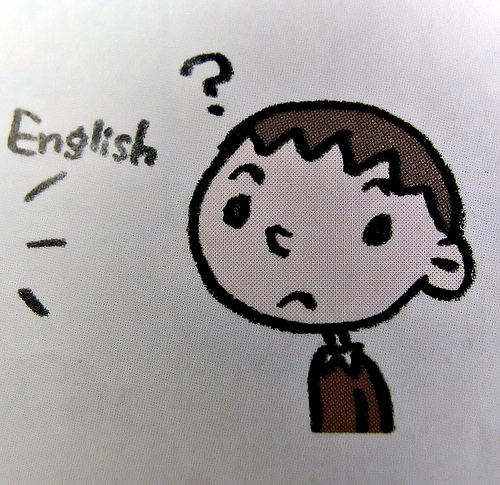An aspect of verb which tells the time of an action is called tense. Tenses have certain rules, according to which  a sentence is made.
a sentence is made.
There are mainly three kinds of tenses.
1. Present tense
2. Past tense
3. Future tense
Each of present, past and future tense is further divided into four kinds.
1. Simple (Indefinite)
2. Continuous (progressive)
3. Perfect
4. Perfect Continuous (Perfect progressive)
- Present Simple Tense: It is used to express an action in present time, habitual or usual actions or daily event or universal fact. It is used to express an action in present time which is usually done on a regular basis. For example a student says, “I go to school”. It is a daily activity of a student to go to school, so such actions are expressed by present simple tense. Another example is, “I work in a factory”. It tells about a usual action of a person that he works in a factory on regular basis.
Rules : 1st form of verb or base verb is used as main verb in sentence.
- Positive Sentence
- Subject + Main verb + Object
- Subject + 1st form of verb (or base verb) + Object
Examples:
I write a letter.
He gets up early in the morning.
Sun rises in east.
Note: If the subject in a sentence is “he, she, it, singular or proper noun” then “s” or “es” is added to the first form of verb or base form in the sentence.
- Negative Sentences
- Subject + auxiliary verb +NOT + Main verb +object
- Subject + Do not/Does not + 1st form of verb (or base form) + object
Examples:
I do not write a letter.
He does not get up early in the morning.
Sun does not rise in east.
Note: In negative sentence auxiliary verb “do or does” along with “not” is used. If the subject in a sentence is “he, she, it, singular or proper noun”, then “Does not” is used after subject in sentence. If subject is “I, we, they, you or plural” then “Do not” is used after subject in sentence. “s” or “es” is not added to main verb in negative sentence.
- Interrogative Sentence :
- Auxiliary verb + Subject + Main verb + Object
- Do/Does + Subject + 1st for of verb (or base verb) + Object
Examples:
Do I write a letter?
Does he get up early in the morning?
Does sun rise in east?
Note: If the subject in a sentence is “he, she, it, singular or proper noun” the sentence is started with Auxiliary verb “Does”. If the subject in a sentence is “I, we, they, you or plural” the sentence is started with auxiliary verb “Do”. “s” or “es” is not added to main verb in Interrogative sentence .
- Present Continuous Tense: It is used to express a continued or ongoing action at present time. It expresses an action which is in progress at the time of speaking. For example, a person says, “I am writing a letter”. It means that he is in the process of writing a letter right now. Such actions which are happening at time of speaking are expressed by present continuous tense. Present Continuous tense is also called Present progressive tense.
Rules: Auxiliary verb “am or is or are” is used in sentence. 1st form of verb or base verb + ing (present participle) is used as main verb in sentence.
- Positive Sentence :
- Subject + auxiliary verb + main verb-ing (Present participle) + object
- Subject + am/is/are + (1st form of verb or base verb + ing) + object
Examples :
I am playing cricket.
He is driving a car
They are reading their lessons.
Note:
If the subject is “I” then auxiliary verb “am” is used after subject in sentence.
If the subject is “He, She, It, singular or proper name” then auxiliary verb “is” is used after subject in sentence.
If subject is “You, They or plural” then auxiliary verb “are” is used after subject in sentence.
The participle “ing” is added to the 1st form of verb i.e. going (go) writing (write)
- Negative Sentence :
- Subject + auxiliary verb + not + main verb-ing (Present participle) + object
- Subject + am/is/are + not + (1st form of verb + ing) + object
Examples :
I am not playing cricket.
He is not driving a car
They are not reading their lessons.
Rules for using auxiliary verbs (am or is or are) after subject in negative sentences are same as mentioned above.
- Interrogative Sentences :
- Auxiliary verb + Subject + main verb-ing (Present participle) + object
- Am/is/are + Subject + (1st form of verb or base verb + ing) + object
Examples :
Am I playing cricket?
Is he driving a car?
Are they reading their lessons?
For making interrogative sentences, the sentence is started with auxiliary verb rather than putting auxiliary verb inside the sentence. If the subject is “I” the sentence starts with auxiliary verb “am”. If the subject is “He, She, It, singular or proper name” the sentence starts with auxiliary verb “is”. If subject is “You, They or plural” the sentence starts with auxiliary verb “are”.
- Present Perfect Tense: It is used to expressed an action which happened or completed in past but usually the action which happened or completed at a short time before now (near past) not a very long time before now. Specific time such as two years ago, last week or that day is usually not used in the sentences of in this tense. It means that this tense expresses the action whose time when it happened, is not exactly specified but it sounds to refer to some action that happened or completed in near past.
Rules: Auxiliary verb “has or have” is used in sentence. 3rd form of verb (past participle) is used as main verb in sentence.
- Positive Sentence:
- Subject + Auxiliary verb + main verb (past participle) + Subject
- Subject + has/have + 3rd form of verb or past participle + subject
Examples :
I have eaten meal
She has learnt a lesson
If the subject is “He, She, It, singular or proper name” then auxiliary verb “has” is used after subject in sentence. If subject is “You, They or plural” then auxiliary verb “have” is used after subject in sentence.
- Negative Sentence :
- Subject + Auxiliary verb + NOT + main verb (past participle) + Subject
- Subject + has/have + NOT + 3rd form of verb or past participle + subject
Examples :
I have not eaten meal.
She has not learnt a lesson.
Rules for using auxiliary verb “has or have” in negative sentence are same as mentioned above.
- Interrogative Sentences :
- Auxiliary verb + Subject + main verb (past participle) + Subject
- Has/have + Subject + 3rd form of verb or past participle + subject
Interrogative sentence starts with auxiliary verb. If the subject is “He, She, It, singular or proper name” then the sentence starts with auxiliary verb “has”.
If subject is “You, They or plural” then the sentence starts with auxiliary verb “have”.
Examples :
Have I eaten meal?
Has she learnt a lesson?
- Present Perfect Continuous tense
Note: If there is not time reference or sense of time reference then it is not Present perfect continuous tense because there is no hint about the time of action when it started in past and it seems just an ongoing action at present time which resembles “present Continuous tense. So the reference of time differentiates between Present perfect continuous tense and Present continuous tense.
Rules: An auxiliary verb “has been or have been” is used in sentence. 1st form of verb (base verb) +ing (present participle) is used as main verb in sentence.
- Positive Sentence.
- Subject + Auxiliary verb + main verb (Present participle) + Object + Time reference
- Subject + has been/have been + (1st form of verb or base verb + ing) + object + time reference
Examples :
He has been watering the plants for two hours.
I have been studying since 3 O’clock
If the subject is “He, She, It, singular or proper name” then auxiliary verb “has been” is used after subject in sentence.
If subject is “You, They or plural” then auxiliary verb “have been” is used after subject in sentence.
- Negative Sentence:
- Subject +”Not” between the Auxiliary verb + main verb (present participle) + Object + Time reference
- Subject + has not been/have not been + (1st form of verb or base verb + ing) + object + time reference
To make negative sentence, the word “not” is written between the auxiliary verbs, so it becomes like “has not been or have not been”. The rule for using auxiliary verb “has been or have been” in negative sentences is as same as mentioned above.
Examples :
He has not been watering the plants for two hours.
I have not been studying since 3 O’clock.
- Interrogative Sentence:
- Auxiliary verb + Subject + Auxiliary verb + main verb (present participle) + object + time reference
- Has/have + Subject + been + (1st form of verb or base verb+ing) + object + time reference
Examples.
Has he been watering the plants for two hours?
Have I been studying since 3 O’clock.
Interrogative sentence starts with auxiliary verb. If the subject is “He, She, It, singular or proper name” then the sentence starts with auxiliary verb “has” and auxiliary verb “been” is used after subject. If subject is “You, They or plural” then the sentence starts with auxiliary verb “have” and “been” is used after subject


0 Comments